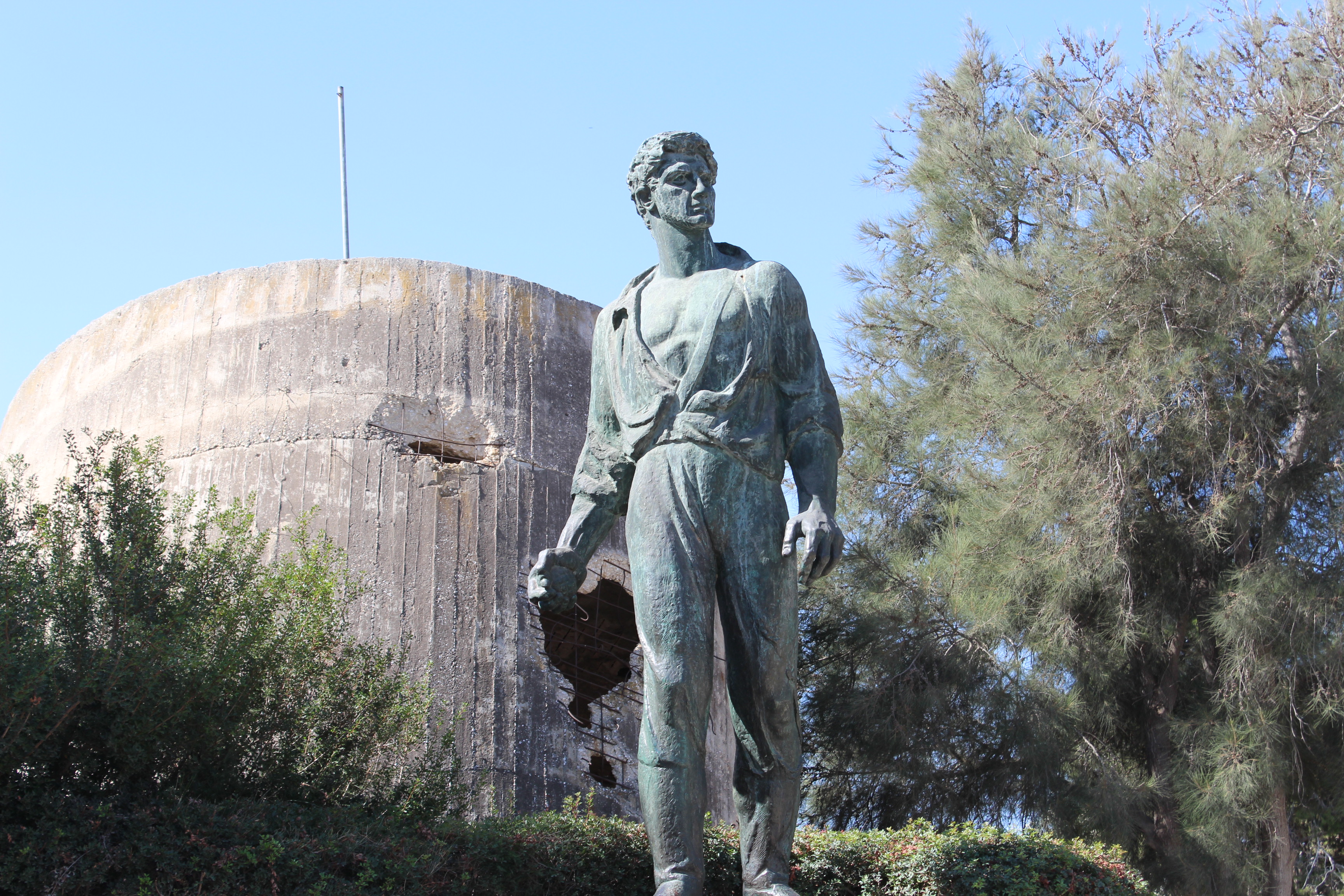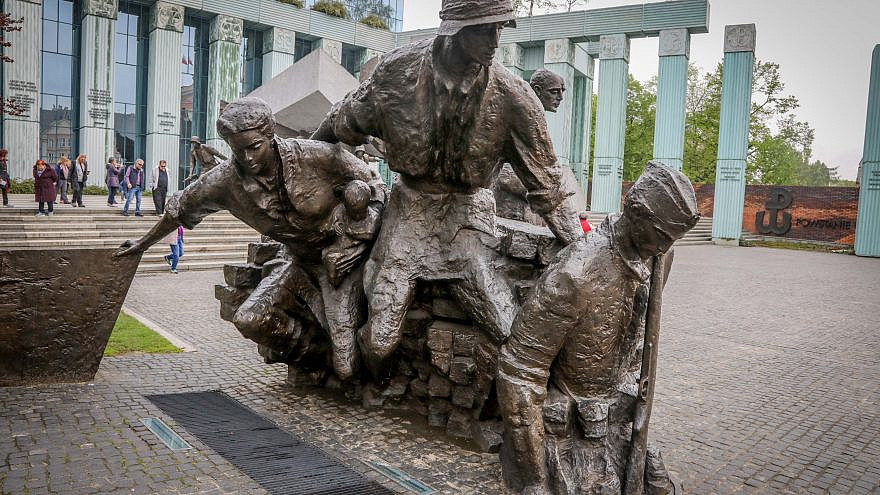Eighty years ago, Jews imprisoned in the sealed, overcrowded Warsaw Ghetto rebelled against their Nazi persecutors. Stubbornly clinging to a desire to die with honor, a small group of starving men and women, armed with meager weapons, staved off the Nazi juggernaut for almost a month—from April 19 until May 16, 1943.
The Warsaw Ghetto has come to epitomize courage against unqualified evil. It was as if David knew Goliath would win, but showed up with his slingshot anyway. To this day, the uprising serves as a forceful source of Jewish pride.
Millions of Americans, Jewish and non-Jewish, tuned in to hear “The Battle of the Warsaw Ghetto.”
AJC’s radio director provided established, Jewish playwright Morton Wishengrad with a file of newspaper clippings and diary fragments to help him craft the story. Wishengrad wrote feverishly for nearly 10 days.
“The Battle of the Warsaw Ghetto” premiered on NBC-Red in October 1943. The docudrama won an award from the Writer’s War Board as War Script of the Month. Two months later, the play aired again.
Wishengrad strategically portrayed the doomed Jews in the best possible fashion for both Jewish and non-Jewish listeners. He revealed a Jewish family like any other, allowing non-Jews to relate to its love and sorrow. By showing Jews willing to fight against all odds and underscoring their humanity, Wishengrad crafted a plea to the larger community. The AJC hoped the play would help Americans understand how desperately Jews needed—and deserved—assistance.
Sounds of gunfire and screams of pain
The story begins with Isaac Davidson relaying how Nazis transferred him, his wife Dvora and their son Samuel to the Warsaw Ghetto. They received food cards entitling each to a paltry pound of bread a week. A female neighbor fills them in on the grim situation, a ploy to communicate salient facts to the listener, thereby further conveying the ghetto’s agonizing conditions.
This early segment also underscores spiritual resistance in the city within a city. Dvora plants a few sprigs of grass on her windowsill to brighten their days. “Now our house has a garden,” she says. “There is no land where the sun doesn’t shine. Now let it shine here on something green in the ghetto.”
Isaac, serving as narrator, emphasizes this optimistic perspective: “Green grass in the Warsaw Ghetto … a few pathetic blades of green in the scrabbled earth. But a sign of a living spirit and a proof that where the spirit lives there can be no degradation. … The ghetto waited for tomorrow. It tried to do so with dignity and self-respect.”
More than 15,000 people, including Dvora, die from typhus, says Isaac. With Samuel sobbing over his mother’s corpse, Isaac pragmatically does the unthinkable: He takes Dvora’s body to the street and leaves her there, naked and nameless, so that he and Samuel can continue to collect her bread, which he calls Samuel’s “inheritance.”
The mourner’s Kaddish and the sound of young Samuel crying quickly follow. Midway into the broadcast, the listener was privy to the degradation and deprivation of one family, and its attempt to stay strong amid desolation.

Only a third of the 25-minute drama depicts the uprising in dramatic fashion, punctuated by sounds of gunfire and screams of pain, portraying Jews with insufficient weapons who achieved small victories.
Wishengrad effectively communicated a story about both spiritual and physical resistance, while also disclosing the ghetto’s atrocious conditions. By the end, he had fully revealed that the Jewish dead were martyrs who died by fire, after rising to the occasion. They should be celebrated, having offered spiritual resistance and “vindicated their birthright.”
“They were Jews with guns,” the script emphasized with an exclamation point. To counter stereotypes of weak, bookish Jews who shy from battle, the docudrama aimed to demonstrate that Jews were very willing to fight when supplied with weapons.
The performances drew thousands of letters. Soon, Armed Forces Radio broadcast the play overseas to troops stationed throughout Europe. By 1945, hundreds of amateur enactments were produced in Sunday schools, high schools and colleges.
The day after the Soviet army liberated Auschwitz, “The Battle of the Warsaw Ghetto” aired again, on the Jewish Theological Seminary’s radio series “The Eternal Light.”
It also commemorated the anniversaries of the uprising in April 1959 and 1961, and was presented during Chanukah in December 1968 and 1977. On the 70th anniversary of the uprising, the drama found life anew on the Internet.
The Warsaw Ghetto Uprising was epic, but it is more than a congratulatory beacon. It is a culmination of how courageously Jews lived in the ghetto amid a deluge of suffering. To this day, it is a story about the resilience of the human spirit amid unfathomable deprivation and degradation.


























